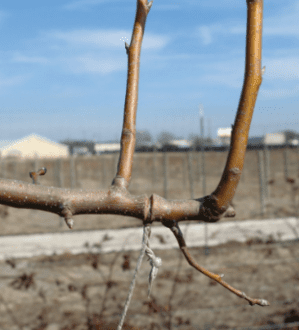Dec 12, 2022Winter pruning aids tree growth, pathogen resistance
Dormant pruning is a necessary function orchardists should undertake to control tree growth, manage vigor and guard against over-cropping.
Jim Kamas, associate professor and Extension fruit specialist and director of the Texas A&M AgriLife Extension Viticulture & Fruit Lab in Fredericksburg, discussed the benefits of pruning at the Sept. 26-27 Texas Fruit Conference in New Braunfels.


Pruning is the systematic method of removal of undesirable plant parts to achieve a plant capable of efficiently intercepting sunlight and producing fruit. Via pruning and a tree training system, portions of the plant are manipulated to manage excessive vigor and achieve a desired shape and framework.
“Especially with homeowners and even a lot of commercial growers, they are afraid to get the pruning shears out and do what needs to be done,” Kamas said. “This leaves trees commonly under-pruned. That means commonly overcropped. The job then becomes much more unbearable.”
Without effective pruning, too many branches grow, creating conditions favorable for fungal growth.
“Fruit trees need dormant pruning every single year to open them up so they can adequately intercept something, also to manage canopy climate,” Kamas said. “Regardless if you’re growing apples, pears or peaches, the suckers, the strong vegetative shoots in the interior of a tree, are a good thing, an indication the tree has adequate, maybe excessive vigor.”


Dormant pruning is an invigorating action, Kamas said. The converse, however, is also true as summer pruning is a dwarfing action.
“One can grossly over-prune a tree in the summer,” Kamas said. The more tissue one removes, the more “brakes” will be applied to tree growth, he said.
Kamas advises against fall pruning and recommends first bloom as the best time. For peach trees, the main period for root growth, with several different flushes, is during the dormant season, when the top of the tree remains dormant, but the tree’s roots continue to grow. That time is the key period for receiving nutrients including potassium, iron and zinc.
Carbohydrate bank
“The more carbs they have, the more they can grow,” Kamas said. “There aren’t many blessings in growing fruit in our climate here in Texas, but the biggest one is we typically have a long period of postharvest photosynthesis.”
Growers should view plants as possessing a bank, with carbohydrates, the energy source plants use to add growth, being the currency. Photosynthesis is the way to deposit carbs into the bank, which also supplies energy for next season’s initial growth.
“The carbs are the antifreeze mechanism of fruit trees,” Kamas said. “We want to keep our canopies functional this time of the year, so we can continue putting carbs in the bank.”
The fewer carbs a tree possesses, the more dead buds will appear after a severe freeze event.
Another reason to postpone pruning until around Christmas and after is the fall and early winter represent a key period for infections from fungal and bacterial pathogens. If a tree sustains a pruning cut in the fall, spores from bacterial canker for peaches or pod canker on apples can cause infections on the stems. The cuts can also host spores which can infect fruit later on. Open pruning wounds attract pathogens, which in the fall can gain a six-month head start on infecting a tree.
If an orchardist prunes at first bloom, one can view all the tree’s blooms and bud distribution, where the tree will and will not bear fruit. If a spore lands on a cut when a tree is beginning to grow, chances of outgrowing that infection are much higher than if pruning occurs earlier, Kamas said.
In the winegrape world, pruning is used as a tool to manage crop load. Annual pruning limits growth.
Fruit growers must remember they’re not growing one crop a year, they’re growing two crops a year: the fruit hanging on the tree for this year and the wood that will be responsible for the following year’s crop, Kamas said.
— Doug Ohlemeier, assistant editor
Top photo: Winter pruning helps control tree growth, manage vigor and guard against over-cropping. Photos: Jim Kamas
Middle photo: runing removes undesirable plant parts and helps trees efficiently intercept sunlight and produce fruit, such as on these peach trees.
Bottom photo: Experts advise against fall pruning. In the winter, pruning helps avoid fungal and bacterial pathogens more present in the fall. Photo:















